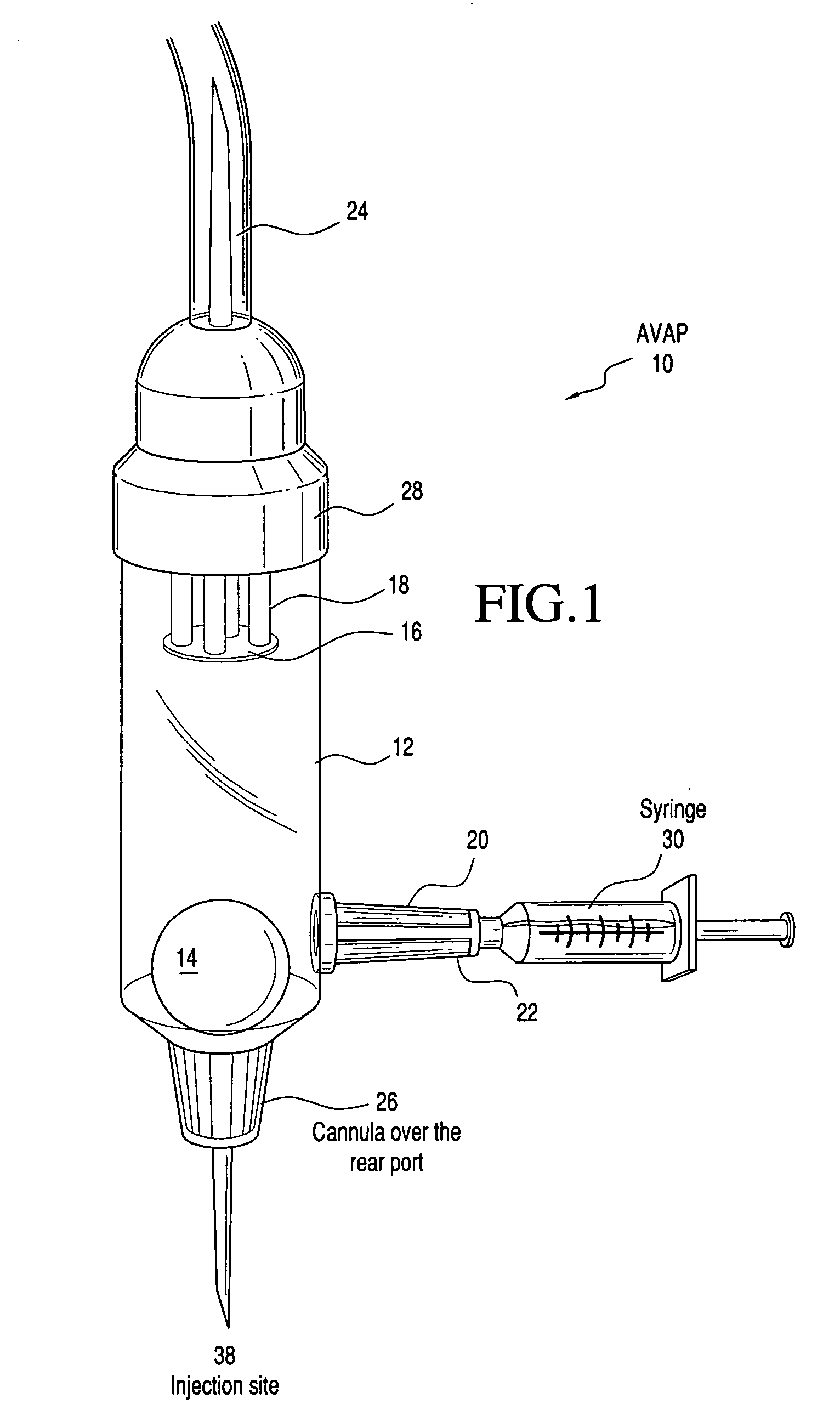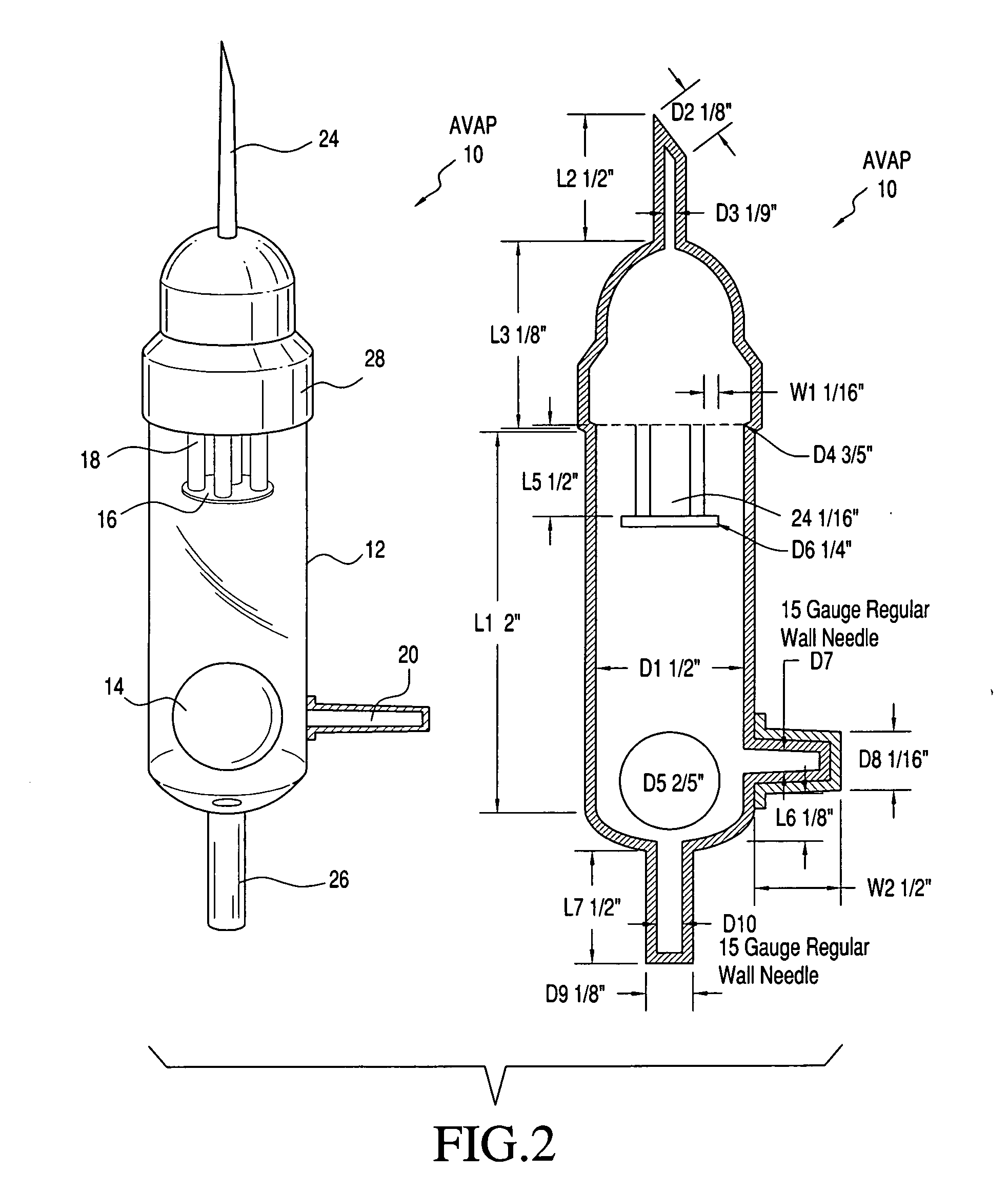AVAP: air valve and port for intravenous (IV) tubing
a technology of air valve and port, which is applied in the direction of intravenous devices, infusion devices, etc., can solve the problems of hindering the blood circulation, air embolism, and reducing so as to reduce the unproductive employment of healthcare practitioners, increase the productivity of intravenous drips, and reduce the effect of air embolism
- Summary
- Abstract
- Description
- Claims
- Application Information
AI Technical Summary
Benefits of technology
Problems solved by technology
Method used
Image
Examples
Embodiment Construction
[0017] Referring now to the drawings and in particular to FIG. 1, there is shown an illustrative embodiment of an air valve 10, which may be used to extract air from intravenous (IV) tubing and prevent any air from being introduced into a patient's veins. Air valve 10 comprises a universal cylindrical drip chamber 12 with a free-floating sphere 14 inside, a horizontal circular ring 16 attached to four posts 18 that extend from the top of the inside of the drip chamber, and an external port 20 with a removable cap-cover 22 at the base of valve 10. As will be explained, the ring 16 and posts 18 form a stop mechanism to prevent the sphere 14 from blocking. The air valve 10 also comprises a spike 24 at the top of the cylindrical drip chamber 12, having a top base 28, and a bottom base 26 at the bottom of the cylindrical drip chamber 12.
[0018] In an illustrative embodiment, all parts of the valve may be made by any of the following plastic polymers: polyethylene; (non-DEHP) PVC; or (non...
PUM
 Login to View More
Login to View More Abstract
Description
Claims
Application Information
 Login to View More
Login to View More - R&D
- Intellectual Property
- Life Sciences
- Materials
- Tech Scout
- Unparalleled Data Quality
- Higher Quality Content
- 60% Fewer Hallucinations
Browse by: Latest US Patents, China's latest patents, Technical Efficacy Thesaurus, Application Domain, Technology Topic, Popular Technical Reports.
© 2025 PatSnap. All rights reserved.Legal|Privacy policy|Modern Slavery Act Transparency Statement|Sitemap|About US| Contact US: help@patsnap.com



